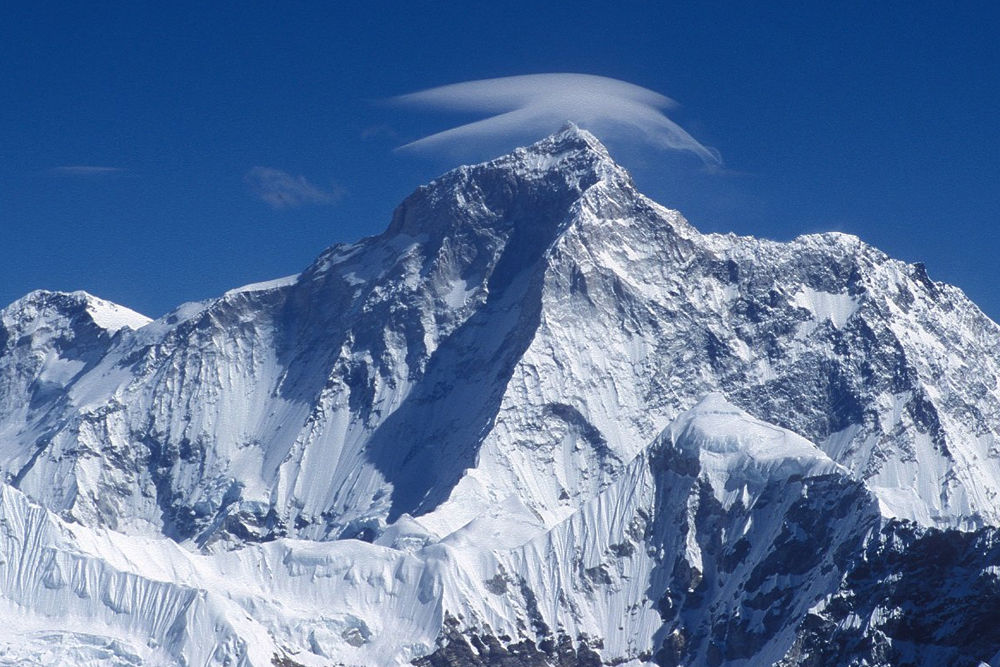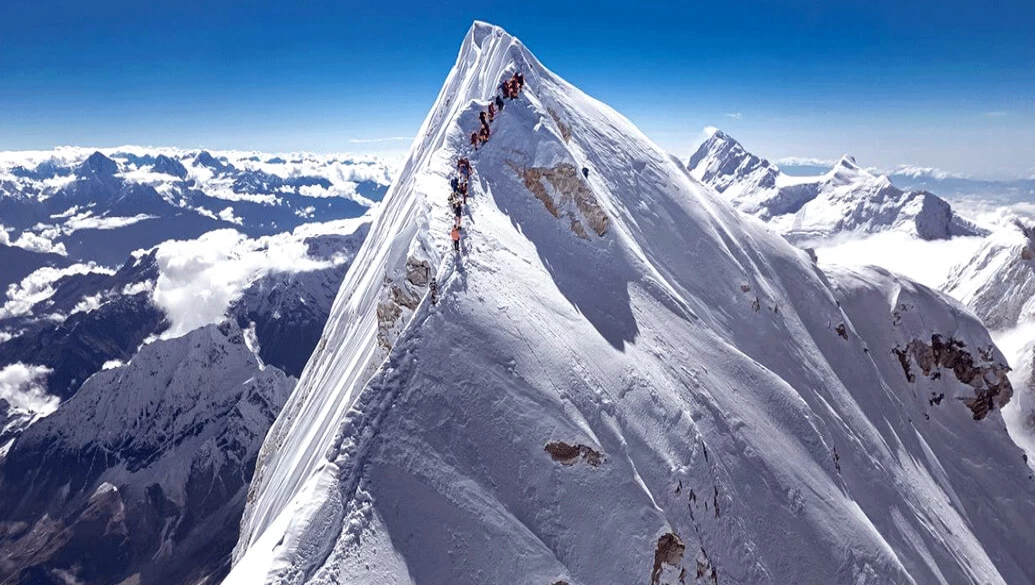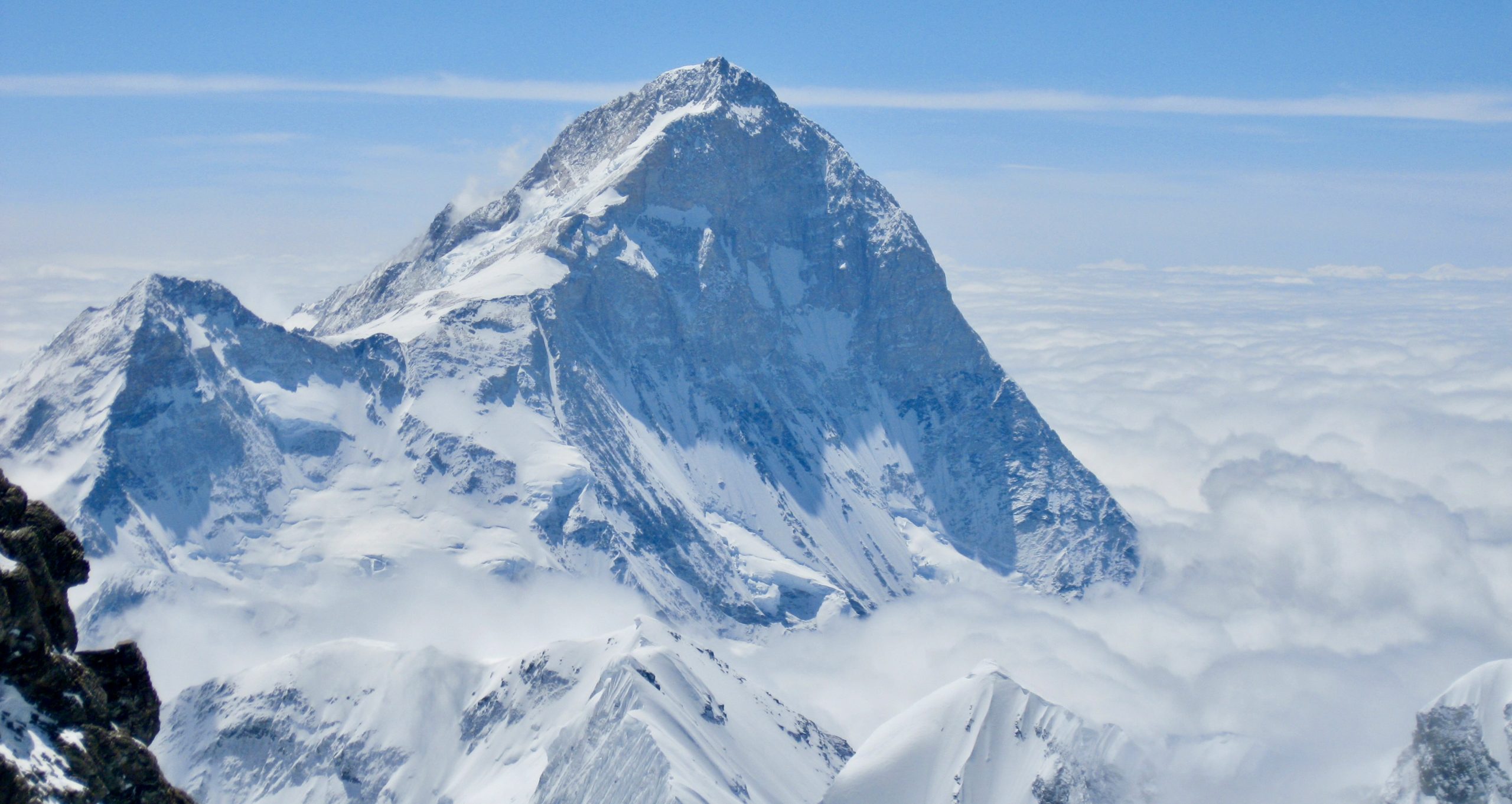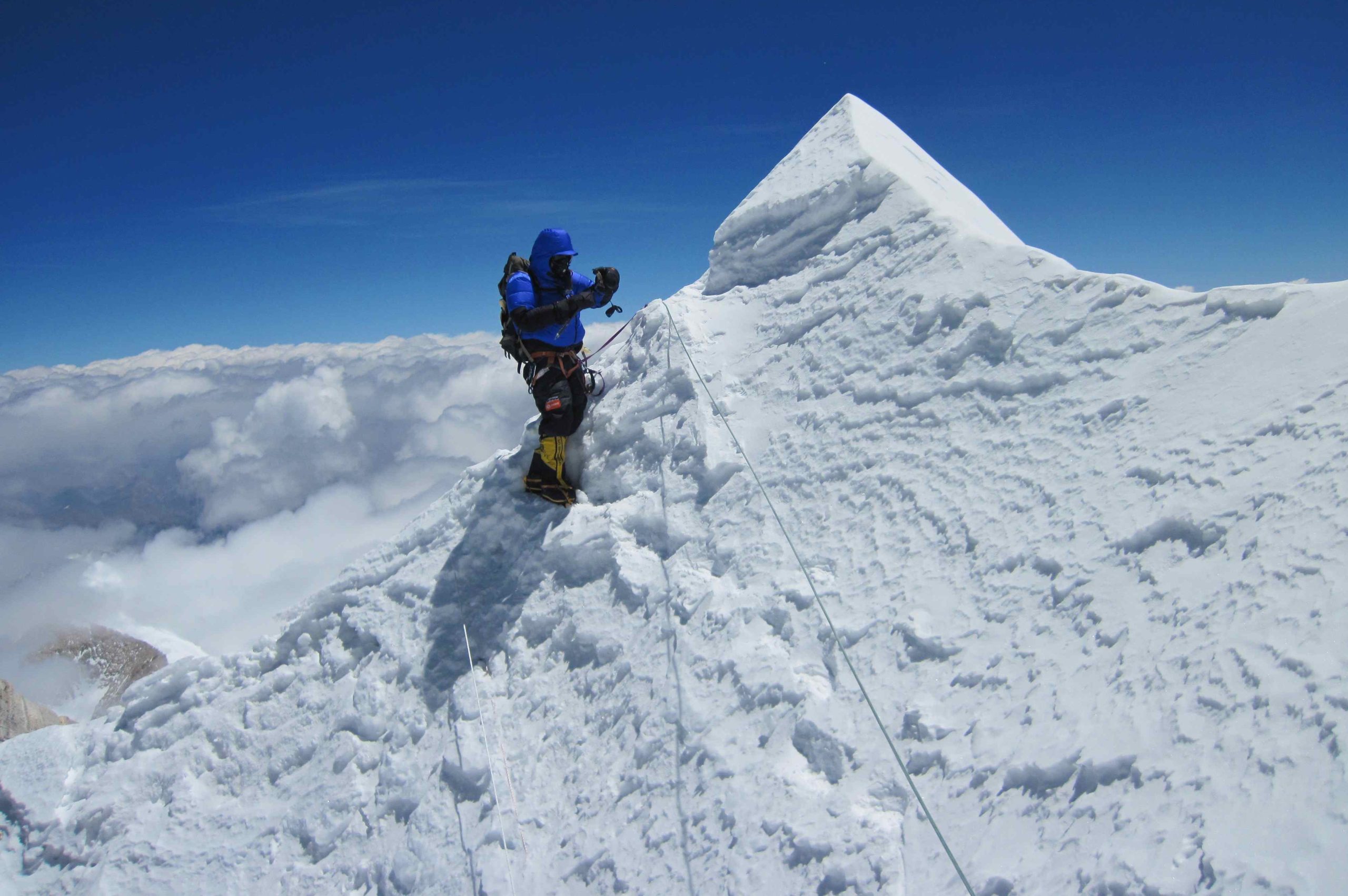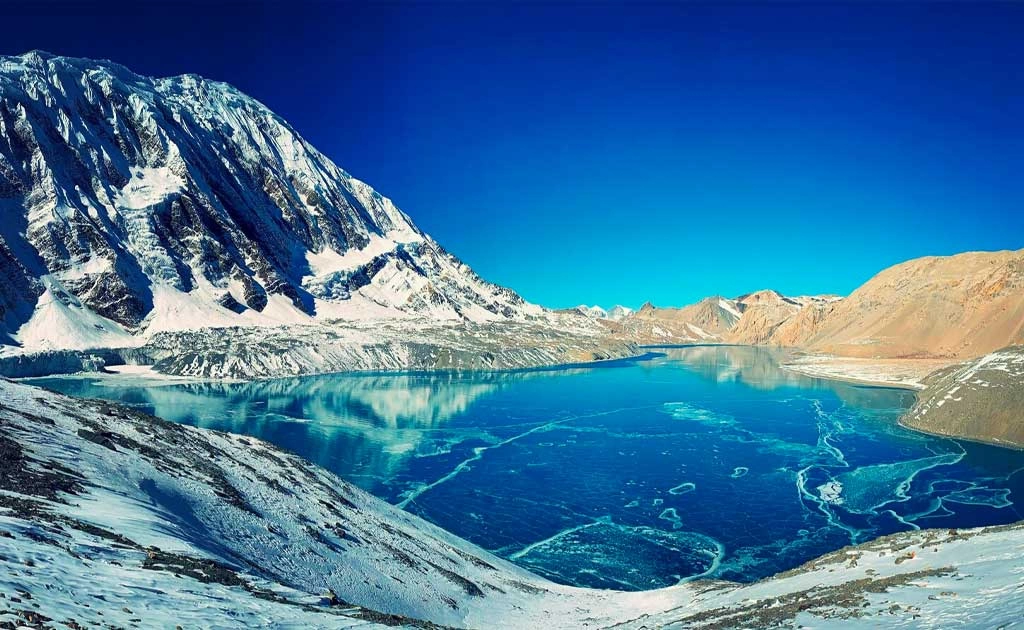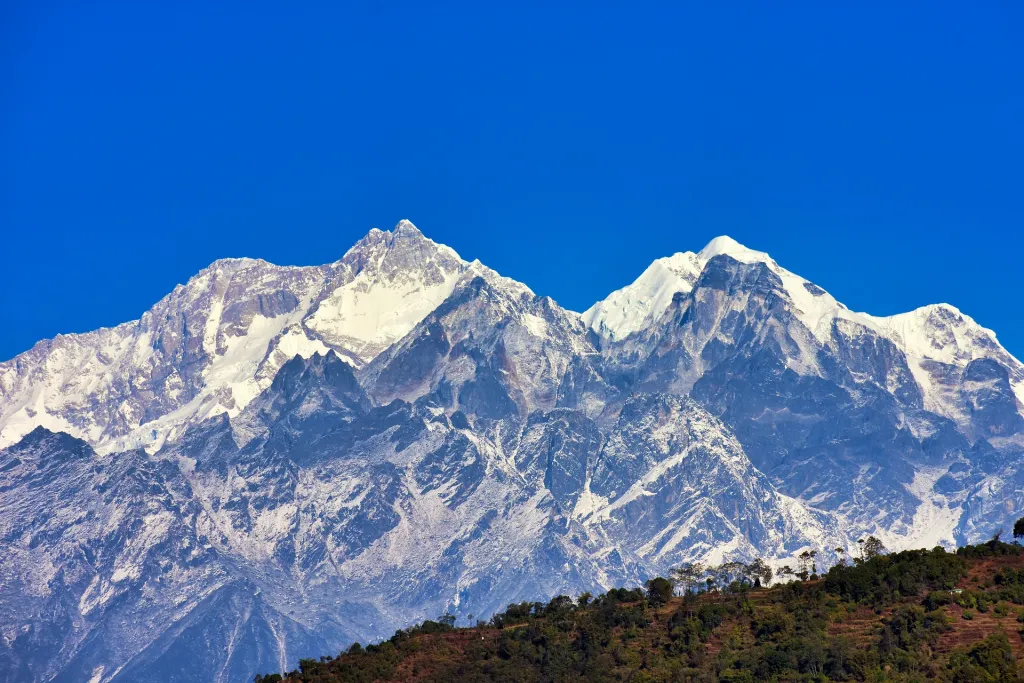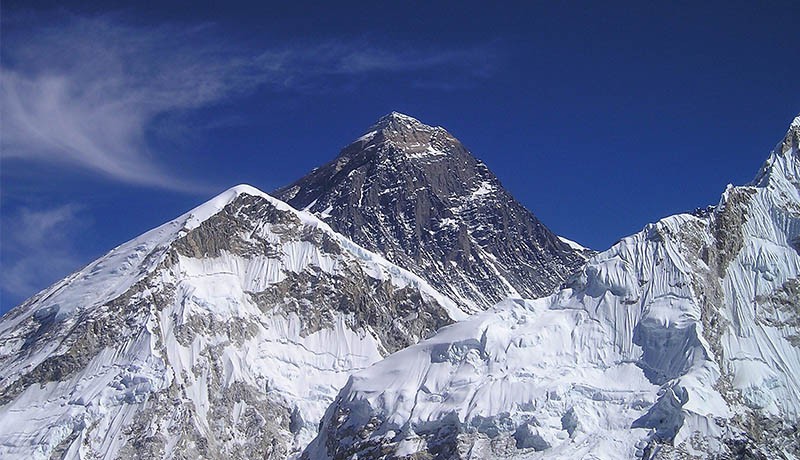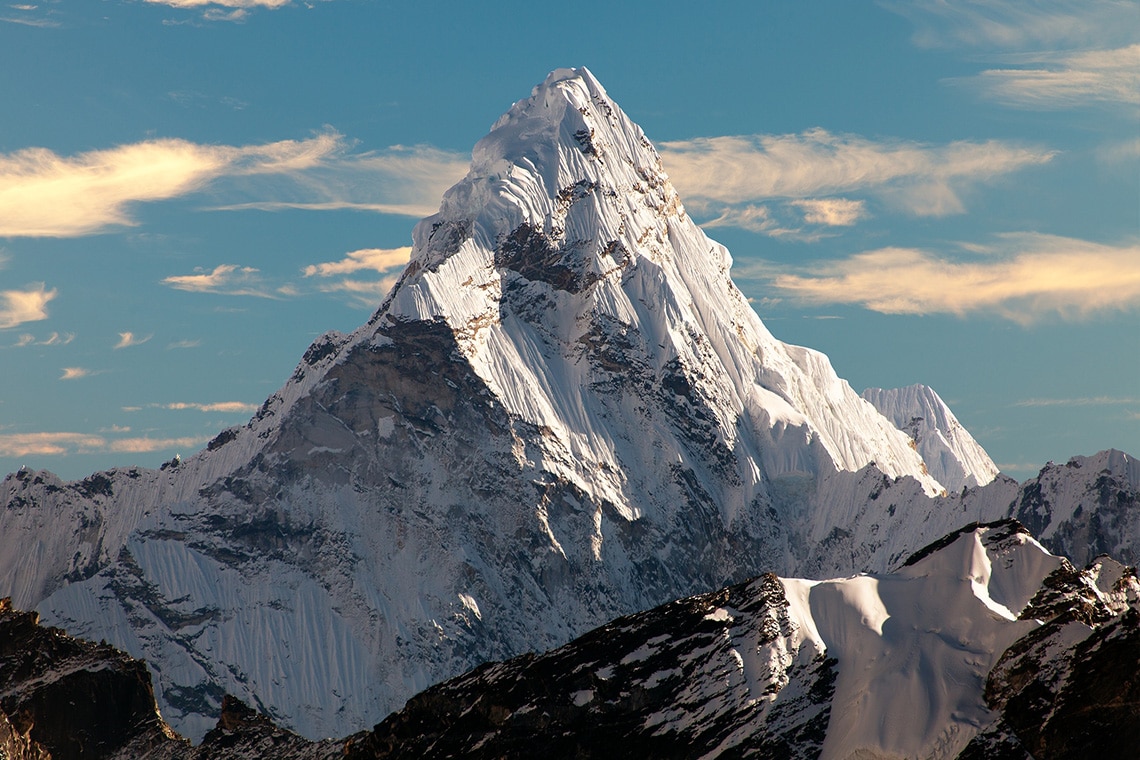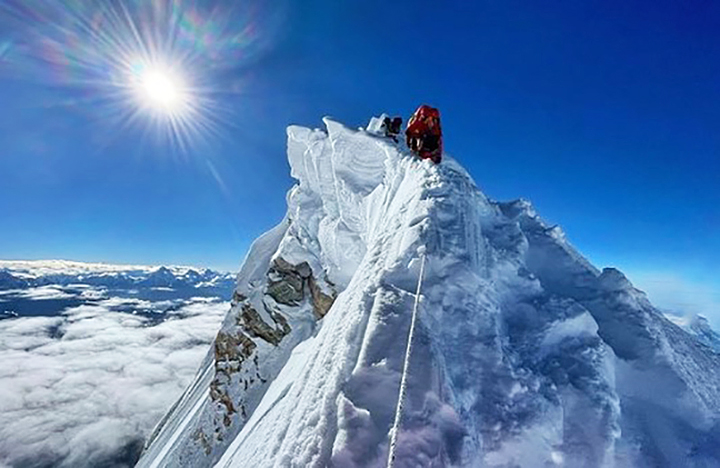Trip Facts
Highlights
- Stunning Himalayan Scenery
- Rich Trekking Route
- Adventure in Isolation
- High-Altitude Camps
- Team Dynamics
Overview
Every interested people in mountaineering is well-known that Mt. Makalu (8463m) is the fifth highest mountain Peak on the Earth. Mt. Makalu is Situated in the heart of eastern Himalayas albeit just about 14 miles east of Mt. Everest. The Massive Mountain with a prominence of 2386m and taking into account surrounding deep valleys like Arun and Barun is somewhat isolated.
The valleys, in particularly the Barun valley, are the home of pristine forests and alpine meadows of Nepal. Within this wide range of altitudes and climates, the Makalu-Barun area contains some of the richest and most diverse flora and fauna of Nepal. Diverse ethnic communities of Rai, Sherpa, and Shinagawa (Bhotia) have inhibited the lower parts of these valleys. Due to isolation these communities are economically poor however they represent rich cultural heritage untouched by technology and world cultural influences. They are the custodians of Makalu-Barun unique biological and cultural treasures. Due to its relative inaccessibility, the area is little known to majority of the visitors, however, those who have visited, return home with unforgettable memories of the area and its people.
Mt. Makalu was first climbed by a French team in 1955. This peak was first mapped and taken photograph of it from the Tibetan side by the British Everest reconnaissance in 1921. Hillary and Shipton had taken that photograph of Mt. Makalu on their Everest reconnaissance in 1951. The first attempt on Mt. Makalu was in 1954 by a US team from California, who trekked all the way from the Indian border near Biratnagar. At the same time a British team had reached in the summit, but this Makalu Expedition was abandoned when Hillary became seriously ill and had to be evacuated. In the autumn of 1954, a French team attempted the peak. In the following spring, successfully ascents were made by three teams of French climbers on successive days. The Japanese also climbed Mt. Makalu in 1970, another French team climbed it in 1971, and a Yugoslav expedition reached the summit in 1975.
Mt. Makalu Expedition in Nepal is very adventurous route to climb because on its west face. This Mt. Makalu is a little bit dangerous as well. The 5 attempts were made before climbing this Mt. Makalu then only it was succeeded in the final. The West Face of Mt. Makalu was successfully scaled in 1997. The Russian expedition had taken the route of this West Face led by Sergey Efimov and climbed the top on 21st of May 1997 via the most difficult route.
Mt. Makalu Expedition Base Camp Services
In the Base Camp
- Snowy Horizon Treks & Expedition provides very professional, supportive and friendly mountaineering logistic services from Kathmandu to the ABC as well as during the climb. Our objective is to ensure a good quality, supportive, safe, friendly, stress free and comprehensive service to maximize summit opportunity.
- We provide a comprehensive service organizing all necessary permits, and climbing documentation, travelling logistics including airfares, ground transportation, porters, and other individual services required by mountaineers. On the track to the ABC, we organize all required accommodation and food.
- Our cook and helpers will prepare and serve three delicious freshly cooked and plentiful meals a day and will ensure that hot and cold drinks are available 24hrs a day.
- We provide spacious expedition quality personal tents for all our clients both with full board or base-camp service only.
- We also provide dining tent, kitchen tent, toilet facilities and portable shower facilities and tent accommodation for our staff.
- We provide access to communication including satellite telephone and internet access, and solar panels to charge your batteries.
Mt. Makalu Expedition Full Board Services
For the full board additional
- We provide personal tent and food, which will be prepared by their climbing Sherpa. We provide UHF/VHF handheld radios on the mountain to maintain communications between ABC and high camps.
- We provide a personal climbing Sherpa guide to help the clients to reach the summit. Personal climbing Sherpa will set up camp 1 and camp 2 and camp 3 including food provisions, fuel and oxygen and will guide and assist the client on the summit day.
Approaches to ABC
- The trek into the base camp of Makalu is absolutely breathtaking and takes you back in time when all Himalayan mountains were approached on foot.
- The trek starts at low elevation of 920m in Tumlin tar, where we arrive on a flight, and rises gradually over next 10 trekking days. It is a perfect way to acclimatize before base camp is reached and to take on climbing relatively quickly. From the village of Tumlin tar situated in the low country the trek climbs through narrow gorges of Arun Valley, rhododendron forest and local pastures to emerge into the higher alpine country. We pass from subtropical to high alpine vegetation with incredible diversity of flora and fauna and untouched and diverse cultures.
Climbing Routes
- Makalu has many interesting routes leading to the summit via west ridge, west face, south face, southwest face and northwest buttress. The normal commercial route is past the Southeast Peak and along the Southeast ridge. The climb is straightforward but moderately technical with exposure on the SE Ridge; it requires some fixed rope set-up.
- Traditionally there are 3 camps, high camp C1 (6,500m), C2 (7,300m) at the bottom of the Southeast Peak ridge and C3 (7,900 m) at the beginning of the SE ridge. With very low Base Camp the ABC is set-up at 5500m. The terrain encountered on the ascents varies from glacier crossings to steep snow fields and requires a good understanding of basic alpine climbing techniques. Makalu has been climbed Alpine style but traditionally all commercial operators practice expedition style to improve the chances of summit success for the clients.
- The bottom part starts from the base of the West Face at 5,800 meters and climbs to the hanging icefall at 6,100 meters to the right part of the icefall. The second part extends from the plateau above the icefall along 35-to-45-degree elevation’s rock up to the 6,500 meters high. The next section is an ice-rock wall, 50 to 55 degrees steep & that extends to 7,400 meters height. The last final section begins 70-to-75-degree elevation’s rock pillar, which leads to the west ridge at 8,000 meters height till to the top of the summit.
- Ropes are typically fixed from 5800m to 6100m and from 6500 m to 7500m. Camps established by the Russian Team were at the following locations. The French Route on the West Pillar is an aesthetically stunning line that has been seldom attempted. It is an exceedingly difficult, a very steep pillar that was first successfully ascended in 1971. The crux of the line comes at approximately 7,600m in the area of the Seignior Wall.
Itinenary
Upon your arrival at the Tribhuvan International Airport, one of the Nomadways Adventure representatives will be waiting for you at the airport. As soon as you complete your Nepal Entry Visa obtaining procedure, we will have a meet and greet, and you will be transferred to the hotel (3-star to 5-star as per request) where you can rest and relax for the day.
The next day, we will complete all the necessary procedures like obtaining permits and other documentation. We will also prepare for our expedition. A short briefing will be conducted to inform you about the technical aspects of the Expedition. You may go sightseeing and shopping in the evening.
After the early morning breakfast, we will drive to the airport and take a short flight to Tumlingtar, the deepest valley in Nepal. Tumlingtar, in Sankhuwasabha district, is the gateway to Makalu Barun National Park. From there, we will meet our crew members and take a 4–5-hour drive to Num, a small village in the Koshi region of Nepal. There we will stay overnight in a tented camp.
The trail from Sheduwa to Tashi Gaon is easy as we need to walk through flat surfaces through the bushes and occasional ascents. After walking for almost 4 hours, we reach Tashigaon, a huge Sherpa village, decorated with prayer flags. We will set up our camp to rest overnight.
The trail from Tashi Gaon to Khongma is an uphill climb through the forests of Rhododendron and pine trees. Kongma La is a ridge with a single tea house. So, we set up a tented camp and rest overnight. Enjoy the meals prepared by our chefs and cooks.
From Khongma, we head towards Mumbuk on a trail that ascends initially until we reach a beautiful lake, “Kalo Pokhari” meaning “a black lake” at 4004 m, and then descends to reach Mumbuk.
The trek gets a bit difficult as well as adventurous from Mumbuk as the trail passes through a section prone to landslides. The latter parts of the trails ascend through the grasslands and forests. The majestic views of Mt Tutse, Peak 7 (6185 m), Isuwa La (5340 m), and many other peaks. The Kharka is pastureland and an exceptional spot for Camping.
From Nehe Kharka, we ascend towards the Lower Base Camp of Mt. Makalu. The views of Mt. Makalu (8481 m), Baruntse (7152 m), Kali Himal (6985 m), Chamlang (7390 m), Makalu II (7640 m) are spellbinding from the Base camp. We will spend two more days in the lower base camp for acclimatization and expedition preparation.
After acclimatizing at the lower base camp, we hike up to the higher base camp at around 5600 m.
We will then start our expedition to the legendary Mt. Makalu. We will conduct multiple rotations around the higher camps before the Summit Push. Our team will set up the fixed ropes throughout the route. We will set up higher camps and rotate back and forth to consecutive camps for training as well as acclimatization. Eventually, when the weather is favorable and everyone is good to go, we head for the Summit Push. On Summit Day, we start early so that we reach the top at Dawn to witness the glorious Sunrise. After spending some quality time at the Summit, we then descend to the lower camps and finally to the Base Camp by the end of Day 42.
Nomadways Adventure strictly follows eco-travel and responsible tourism. So, before we return, we make sure we clean up all the trash and garbage that we produced during our stay at the Camp and higher camps. After cleaning up the Base Camp, we prepare to return to Yangle Kharka.
We retrace our path back to Yangle Kharka through the adventurous trail. We will then rest overnight in a tented camp in Yangle Kharka.
From Yangle Kharka, we retrace the path with the landscapes of landslides. After 4-5 hours we finally reach Khongma to camp overnight.
During our return, we cover more distance as we descend on major parts. So, we trek to Sheduwa through Tashigaon upon our return.
The trail from Sheduwa to Num descends steeply at the start and later ascends to reach Num. After passing a small forest of bamboo and small villages, we finally reach Num. from Num, we will meet our crew and drive to Khandbari and rest overnight in a hotel.
After a night’s stay in Khandbari, we have our breakfast and drive to Tumlingtar airport. Then, we will fly back to Kathmandu and rest at the hotel.
In Kathmandu, you can relax in Thamel, a popular street for tourists where you can get anything you want. You may do some shopping, eat in a nice restaurant, get some spa, do some laundry and many other things. There are also many different attractions in Kathmandu including but not limited to Swayambhunath, Pashupatinath, Bouddhanath Stupa, Basantapur, Bhaktapur, Patan, and so on. You may go sightseeing around these areas with one of our city guides. We will join for the farewell dinner in the evening.
If you have not signed up for any other Add-ons Adventure packages, it’s time to bid you farewell. One of our representatives will drop you off at the airport 3 hours prior to your scheduled departure.
Cost Includes:
- All airport transfers
- Luxury Hotel in Kathmandu for two nights with breakfast
- All necessary paperwork and trekking permits (National Park permit and TIMS)
- An experienced English-speaking Govt. registered trekking guide and local porters to carry luggage (2 trekkers: 1 porter)
- Full meals: Breakfast, Lunch & Dinner of your choice
- Supplementary snacks: energy bar and cookies
- Seasonal fresh fruits desert every day
- Unlimited Chlorine treated Safe Drinking water
- A comprehensive First Aid kit
- Oxi-meter: To check heart rating and oxygen saturation to Everest Base Camp and return
- All government and local taxes
- Trekking equipment: down-filled sleeping bag, walking poles, and duffel bag
- Souvenir: Trekking Route map printed T-Shirts
Cost Excludes:
- Lunch and dinner in Kathmandu
- Hot and bottled drinks
- Electronic device re-charge Wi-Fi
- Hot shower
- Travel insurance and medical evacuation
- Tipping
Equipment
Trekking requires careful selection of gear to ensure comfort, safety, and efficiency on the trail. Depending on the conditions (terrain, weather, duration), the equipment you need may vary, but here’s a comprehensive list of essential trekking gear:
- Backpack
- Capacity: Typically, for a multi-day trek, a 40-60L pack is ideal.
- Fit: Adjustable straps for shoulder, chest, and hip.
- Features: Hydration system compatibility, side pockets for easy access, and a rain cover.
- Footwear
- Trekking Boots: Look for boots with good ankle support, durable soles (Vibram is a popular choice), and waterproof features.
- Trail Shoes: For lighter treks or well-maintained paths, trail shoes may suffice.
- Sock Layers: Merino wool socks or synthetic socks that wick moisture and reduce blisters. Avoid cotton.
- Gaiters: To keep debris, mud, and snow out of your boots.
- Clothing (Layering System)
- Base Layer: Moisture-wicking (synthetic or merino wool) long-sleeve top and bottoms.
- Mid Layer: Insulating layer, such as a fleece or down jacket.
- Outer Layer (Shell): Waterproof, windproof jacket and pants. Gore-Tex or similar fabrics are excellent choices.
- Trekking Pants: Convertible pants (with zippers for shorts) can be useful.
- Trekking Shirt: Lightweight, moisture-wicking, and quick-drying.
- Gloves: Lightweight gloves for warmth, plus an additional heavier pair if trekking in cold climates.
- Hat/Cap: A sunhat or beanie depending on the weather.
- Neck Gaiter/Buff: For sun protection, warmth, or dust.
- Sleeping Gear
- Sleeping Bag: Temperature-rated for the conditions you’ll face. Down bags are warmer and lighter but lose effectiveness if wet, while synthetic bags dry quicker.
- Sleeping Pad: Inflatable or foam pads that insulate from the cold ground.
- Tent: Lightweight trekking tents (1-3 person) that suit your conditions. Some options include 4-season tents if you're trekking in harsh weather.
- Hydration System
- Water Bottles: Collapsible or hard plastic bottles (ensure they’re BPA-free).
- Hydration Reservoir: Camelbak or similar bladder systems for easy access to water.
- Water Purification: A filtration system (e.g., Sawyer, LifeStraw) or chemical tablets to purify water from streams or other sources.
- Food and Cooking
- Stove: Compact gas or alcohol stove for cooking on the trail.
- Cookware: Lightweight pots or pans, often titanium or aluminum.
- Fuel: Compatible fuel for your stove (check for availability in the region you’re trekking).
- Food: Dehydrated meals, energy bars, trail mix, nuts, and fruits. Lightweight, high-calorie, and easy-to-prepare foods are best.
- Navigation Tools
- Map and Compass: Always have a paper map as a backup, even if you use a GPS.
- GPS Device or Smartphone with a Trekking App: Make sure to download offline maps.
- Altimeter Watch (optional): Useful for tracking elevation and route progress.
- Lighting
- Headlamp: Hands-free lighting for night-time use, with extra batteries.
- Flashlight: A backup to your headlamp.
- First Aid Kit
- Include basic supplies: Bandages, antiseptic wipes, blister treatment, pain relievers, and any personal medications.
- Personal Medications: Always bring enough for the whole trip, plus extras in case of delays.
- Sunscreen and Lip Balm: Protect your skin from sun exposure.
- Safety Gear
- Multi-tool/Knife: A good multi-tool (like a Swiss Army Knife or Leatherman) is very useful for repairs and emergencies.
- Whistle: For signaling.
- Emergency Blanket: Lightweight and compact for warmth in case of emergency.
- Firestarter: Matches or a lighter, and waterproof if needed.
- Miscellaneous
- Trekking Poles: Help with balance, reduce strain on knees, and improve traction on uneven terrain.
- Towel: Quick-dry, compact towel.
- Sunglasses: UV protection for your eyes.
- Camera/Smartphone: For documenting the journey, with extra storage or a portable charger.
- Personal Hygiene and Toiletries
- Toilet Paper: Always carry biodegradable toilet paper and a small trowel for digging a "cathole" if there are no facilities.
- Hand Sanitizer: To keep clean without access to water.
- Wet Wipes: For cleaning yourself when there's no shower.
- Biodegradable Soap: If you need to wash, use eco-friendly soap.
- Toothbrush/Toothpaste: Compact travel versions.
- Weather Protection
- Sun Protection: Sunglasses, sunblock, and a wide-brimmed hat for sun protection.
- Rain Gear: A high-quality waterproof jacket, pants, and gaiters, especially if you're trekking in areas with unpredictable weather.
- Cold Weather Gear (if needed): Depending on the trek, you might need additional gear like down jackets, insulated gloves, or even crampons for ice or snow.
- High-altitude Treks: Consider gear for altitude sickness (like Diamox), extra layers for extreme cold, and an oxygen system if necessary.
- Long-distance Treks: You might need additional gear like extra food storage, a larger stove, or a lightweight trekking umbrella.
FAQ's
A typical Makalu expedition lasts around 50–60 days. This time includes the trek to Base Camp, acclimatization, climbing, and the descent.
The best times for an expedition are pre-monsoon (April to May) and post-monsoon (September to October). These months offer more stable weather conditions for high-altitude climbing.
The approach to Makalu Base Camp generally begins from the town of Num, which can be reached by a multi-day trek from the nearest airport at Tumlingtar. The trek usually takes 6–9 days depending on conditions and acclimatization.
Yes, a climbing permit is required, which can be obtained through the Nepal Tourism Board. You’ll also need to pay for a conservation area permit for the Makalu Barun National Park.
